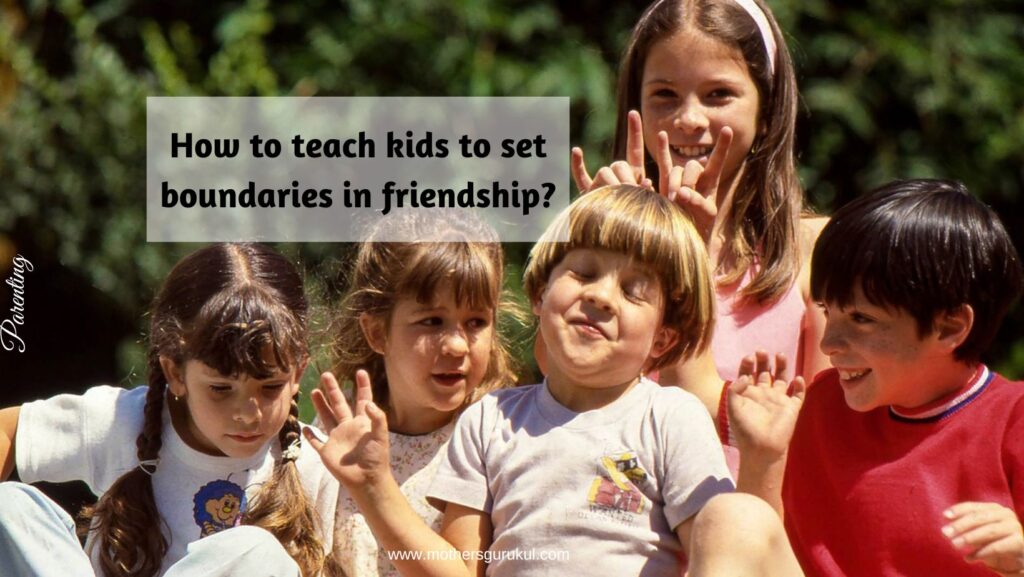In parenting roles, we have to teach our kids that when they are uncomfortable discussing a specific topic or when someone comes and shares some new information with them, how should they decide if they should entertain such talks? And if they don’t want further discussion, how do they communicate it to their peers? And that is what we will talk in this post.

Learning is a crucial part of growing. When done thoughtfully, it opens up a new world for kids. Any new information generates curiosity. That’s human nature. With kids, curiosity is their second nature. Since birth, they learn new skills and concepts through curiosity. When a child starts academic learning, many things come into the picture. Parents see their children picking new habits, behaviors, and words. They come home with a discussion topic that they have heard at school. Talking about discussion, it is not unusual for them to ask you questions. Sometimes, you are ready to answer; sometimes, you are shocked because you didn’t see them coming. I can understand your mental state.
In parenting roles, we have to teach our kids that when they are uncomfortable discussing a specific topic or when someone comes and shares some new information with them, how should they decide if they should entertain such talks? And if they don’t want further discussion, how do they communicate it to their peers?
How to teach kids to set boundaries in friendship?
- The true meaning of healthy friendship
- Open communication with parents
- Setting some internal and external boundaries
- No one other than doctors and parents is allowed to talk about private parts.
1.The true meaning of healthy friendship
Human beings, by nature, need connection. It gives them a sense of security. When kids are young, for them, friends mean playing together, giggling, and having playdates. We, as adults, know that friendship is beyond this. But they need to be more mature to understand the deep meaning of healthy friendship. Sometimes, they need clarification on whether they should listen to their friends or their hearts. Sometimes, they even feel bad about their friend’s behavior, but their friend still takes the front seat. We must tell them that “a good friend will never intentionally hurt you. When they want to share some information, they will always respect your desire to know about it. They will not feed you with information you don’t want to discuss. In short, their company should make you happy and not stressed out.”
2.Open communication with parents
When kids know they can share their feelings with their parents without being judged, they are confident that they can go to their parents and vent out no matter how challenging the situation. But this increases parent’s responsibility. When our child shares a topic that is inappropriate for their age, the parent’s first reaction is a bit shocked. Their child is unsure about it, or s(he) is confused about its content and is seeking their help. Out of shock, parents react in a manner that may scare the child. Sometimes, children start to question their decision to share it with their parents.
3.Setting some internal and external boundaries
Setting some boundaries is very important no matter what the age is. When we set internal boundaries, then only we can apply them externally. External boundaries may not be welcomed by peers because they have never experienced them. Kids, by nature, are curious and get carried away with any new information. Their brain needs to fully mature to filter down its content. But by setting some internal and external boundaries, they can help themselves and avoid getting affected. Let’s understand this with the help of an example.
Your 7-year-old daughter comes to you and tells you that recently, she found out about periods from her friend. Now, knowing the information she has acquired is essential here. 7 years is relatively early for kids to discuss periods. But we don’t see the source of this information. Her friend may have heard someone talking about it, and she shared it with her friends in a weird and terrifying manner. So, by gathering the titbits of the whole concept and then interpreting it as per her understanding, she passed it on to her friends. Few kids are very easygoing and don’t keep things in their minds for a long time, but some are concerned about new information. So, if they can stop the information flow initially by saying, “I don’t want to know about it” or “I am not interested in it,” they can break the conversation immediately. I know it is hard for the kids to say this to their friends. They think that they will hurt their friend’s feelings. But as mentioned earlier, parents should explain to their kids that if friends make them uncomfortable, it is better to stay away from them.
Related article: How to define healthy boundaries
4.No one other than doctors and parents is allowed to talk about private parts.
One such boundary we should tell our kids is not to discuss private parts with friends. We have to explain to them that talks about private parts should be something other than the topic of discussion among friends. They can talk about it to either doctors or parents. Your doctor’s visits can be a perfect example to explain this. During the annual well check, the doctor seeks the parent’s permission before they examine the private area. They say, “I will check it because your mommy is here.” This is enough to give them a good reason.
Establishing such internal boundaries will enable them to set external boundaries for any uncomfortable topics. They will know that if any information coming their way has to be discussed with their parents or doctor, they have to stop it immediately. If it continues, it is better to find a different group of friends.
Let’s make them responsible humans.
We should also explain to our kids that if they don’t like topics or talks shared by their friends, they should restrict themselves from discussing them with other friends. But they have to talk to their parents openly.
Wrap up!
We spend a lot of time talking to our children about the importance of friendship: making and keeping friends. Sometimes, we spend time talking about what to do when there’s a conflict in a friendship. What we don’t always do is spend time teaching kids about what healthy friendships look like and what friendship boundaries are. As grownups, though, we know how important this is! It’s also essential for children. They usually get the basics (don’t kick, share, be nice), but they need us to help them understand some of the more complex parts of friendship responsively and proactively. Learning to set healthy boundaries early will help them in developing a strong bond with their true friends. I hope this above discussion has given you some ways to do that.
